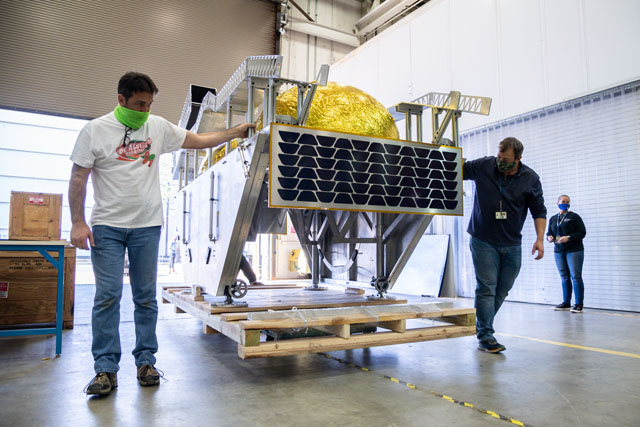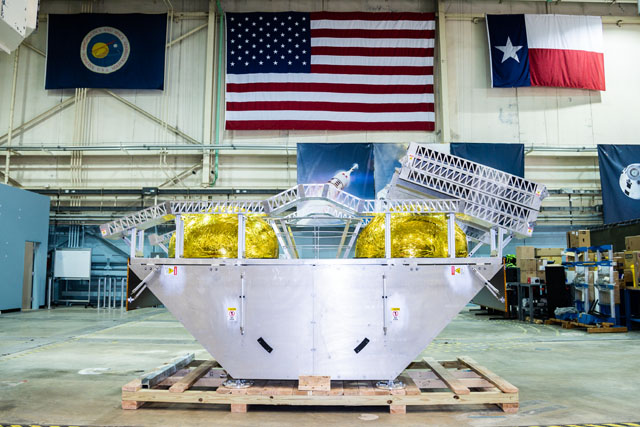Special Delivery for NASA's Johnson Space Center
Hey, Johnson Space Center, did you hear? There’s officially a new kid on the block.
The Griffin Lander analog model recently arrived to the Volatiles Investigating Polar Exploration Rover (VIPER) lab, where it will be built for its mission to the lunar South Pole. The lander will bring NASA’s water-hunting rover, VIPER, to the surface of the Moon. The VIPER lab and clean room are located in Building 9S.
Modeling the upper deck and ramps of the lander, this non-functional version was supplied by Astrobotic, the company tasked to deliver VIPER to the Moon through the Commercial Lunar Payload Services, or CLPS, initiative.
NASA will use a VIPER prototype to test drive down the Griffin Lander’s ramps, ensuring the rover can easily maneuver the ramp’s surface and angles.
The Johnson team will be making great strides to build VIPER in the Surface Segment Integration and Test Facility. The team will use a VIPER test unit with the lander mock-up to practice departing off the lander.
VIPER will be NASA’s first robotic mission to the Moon. The data VIPER transmits back to Earth will be used to create resource maps, helping scientist determine the location of water ice on the Moon. VIPER’s findings will provide NASA with future landing sites under the Artemis program.
Learn more about VIPER here.



The Griffin Lander analog model recently arrived to the Volatiles Investigating Polar Exploration Rover, or VIPER, lab at NASA's Johnson Space Center. Credits: NASA/Josh Valcarcel







